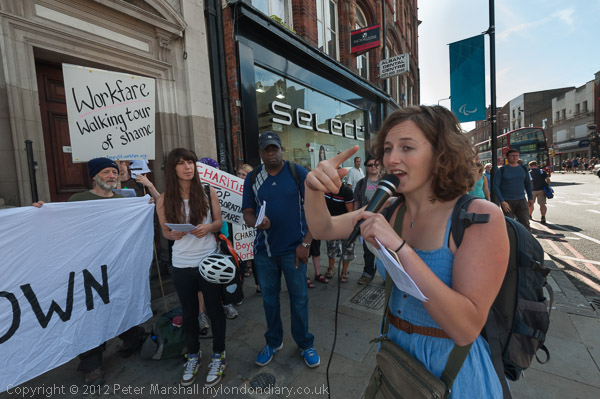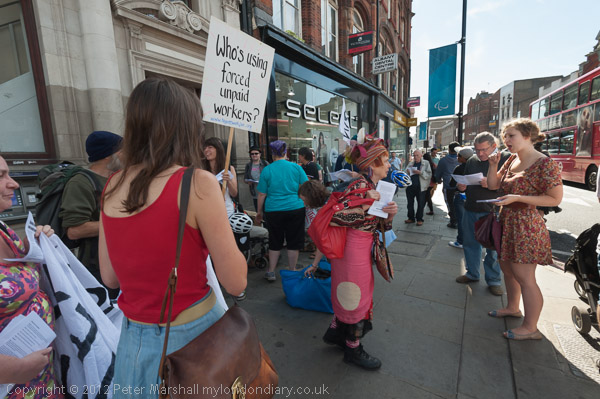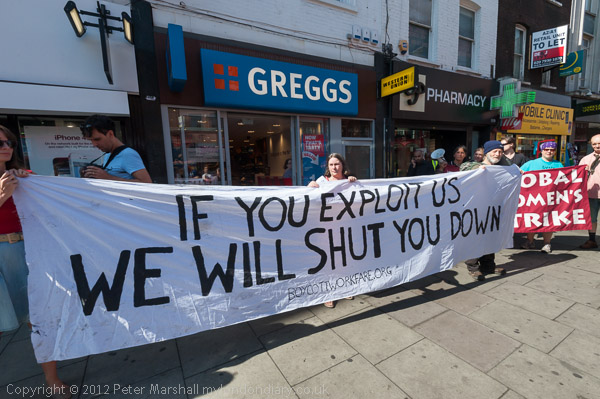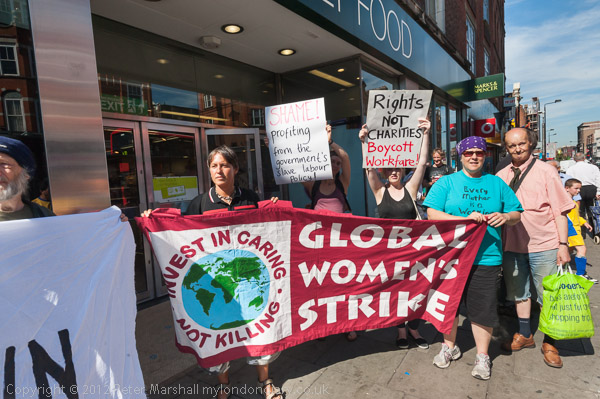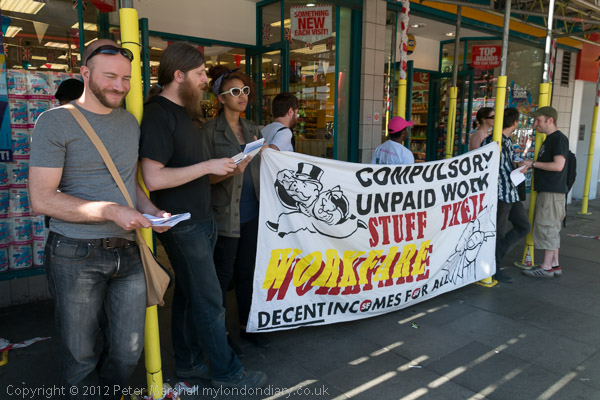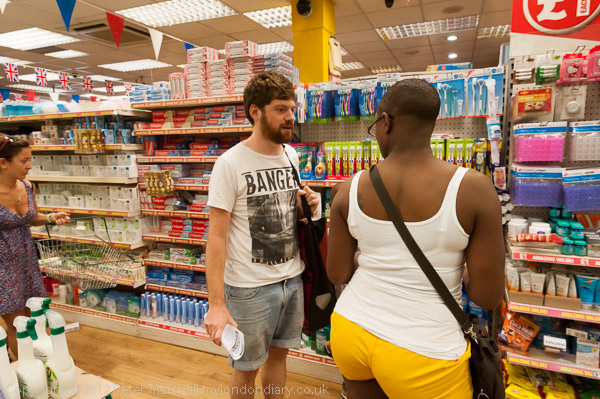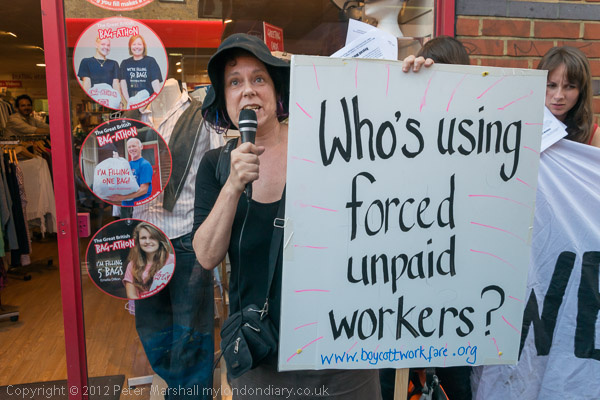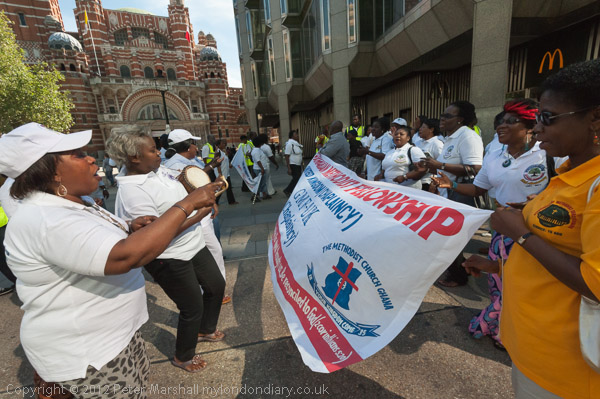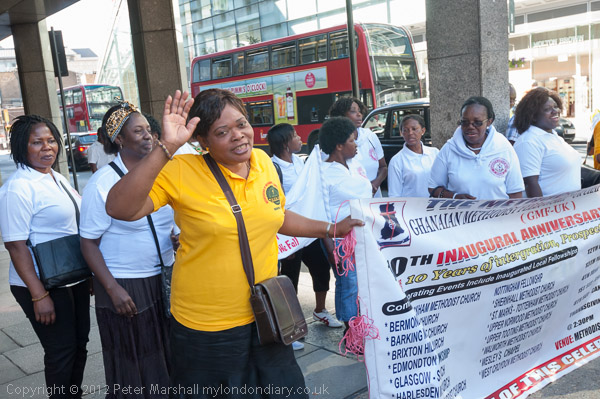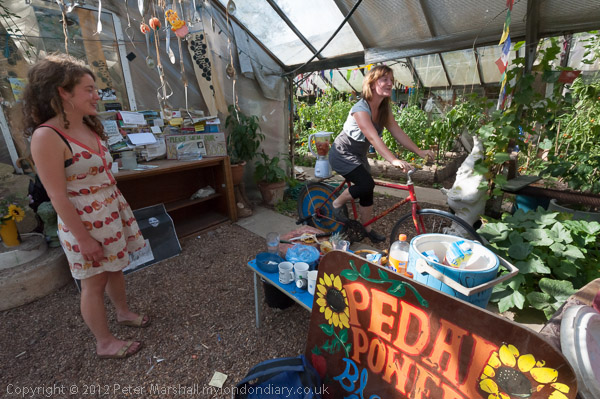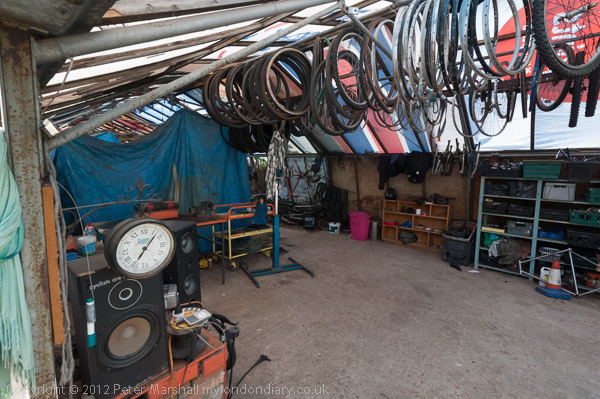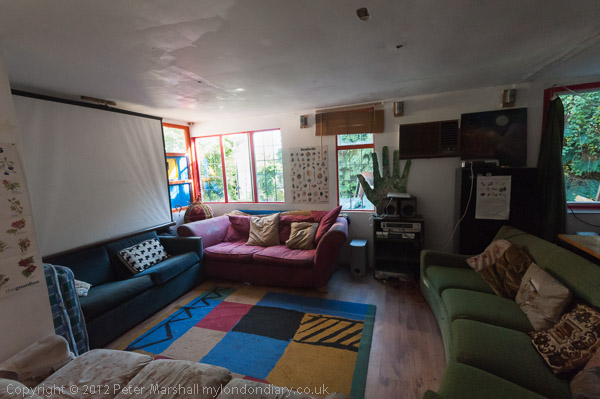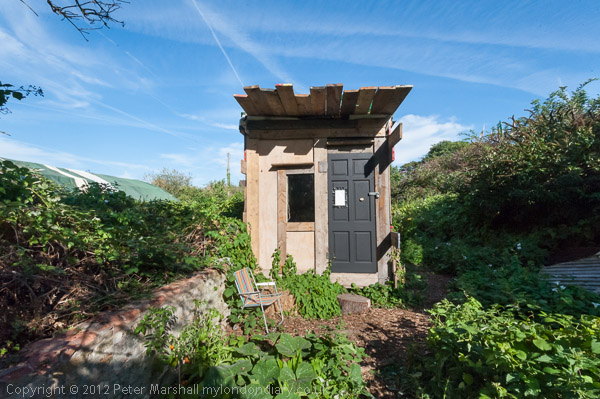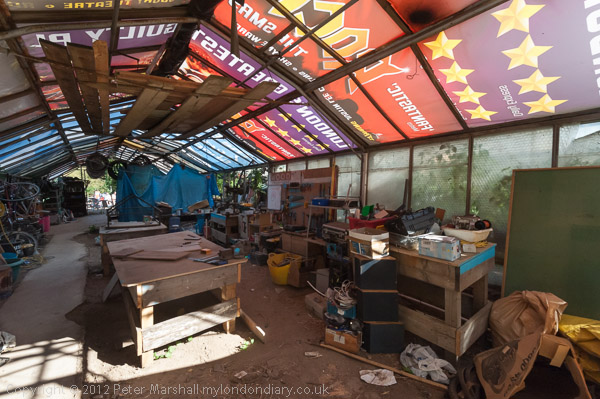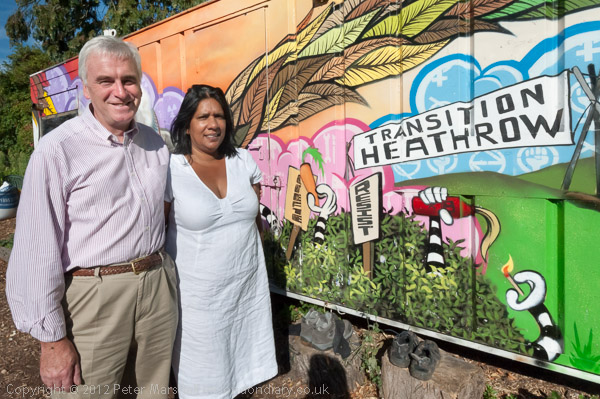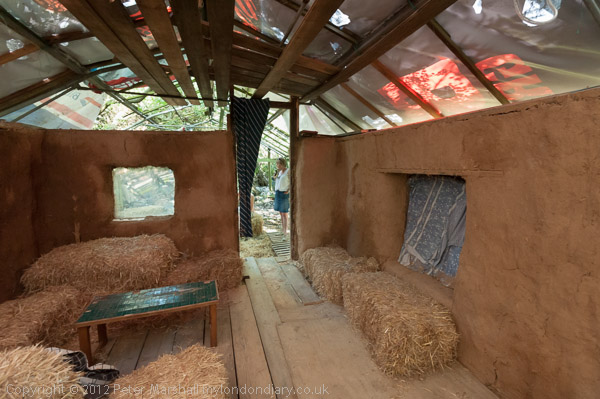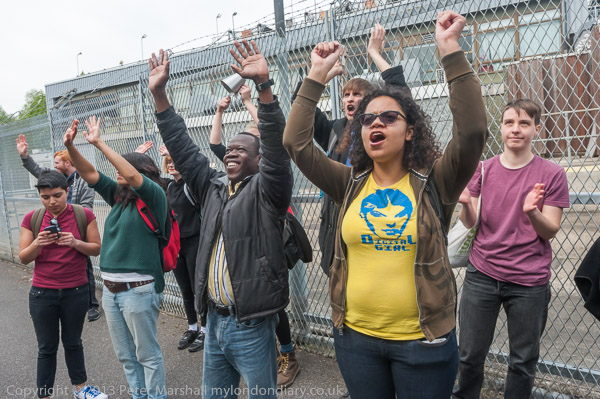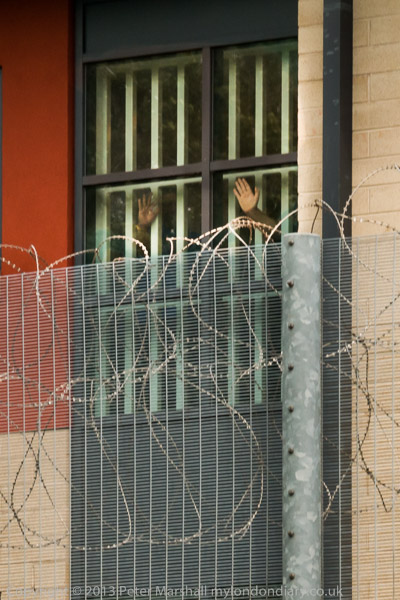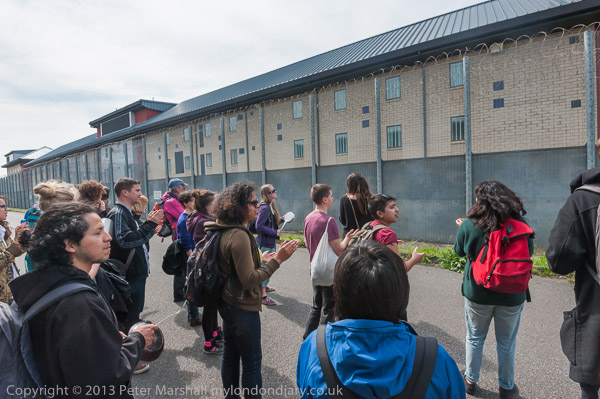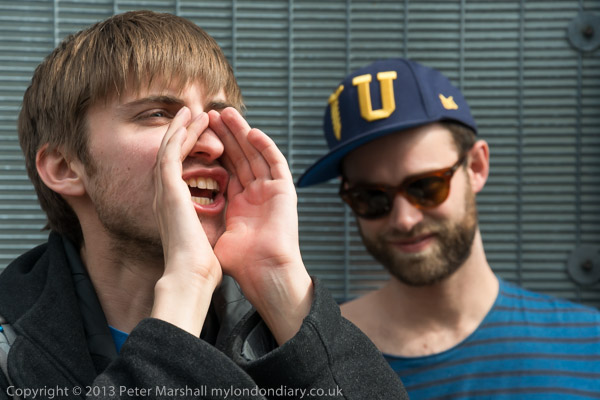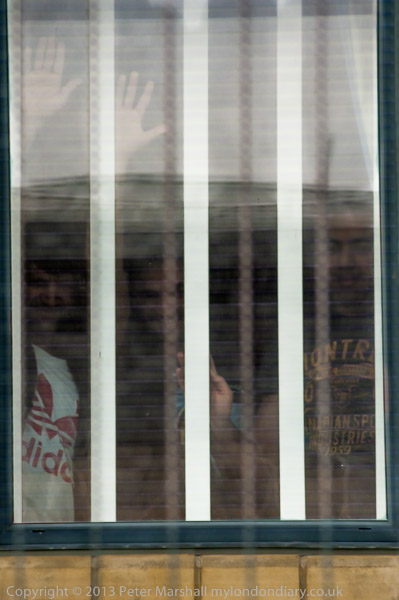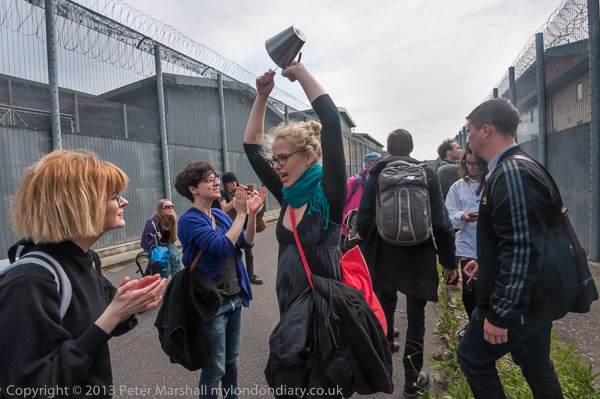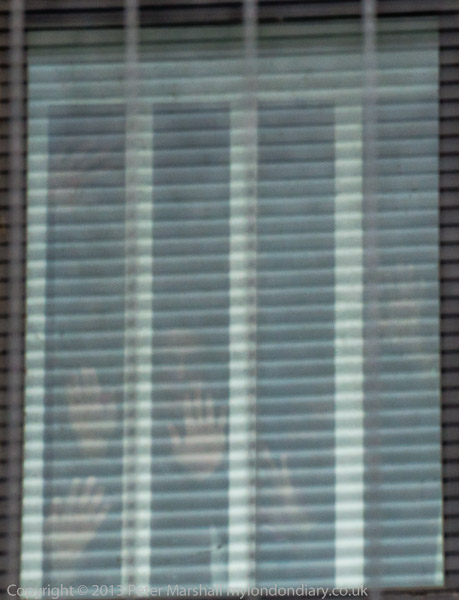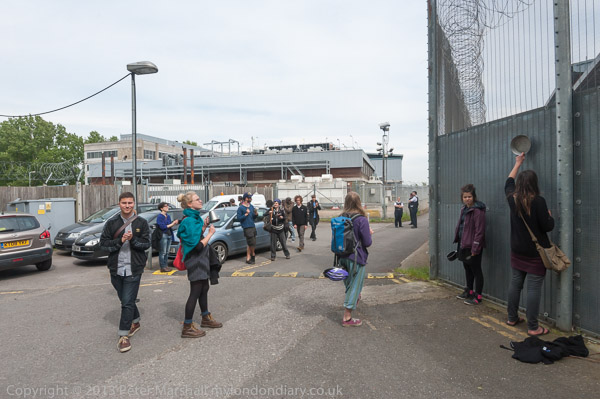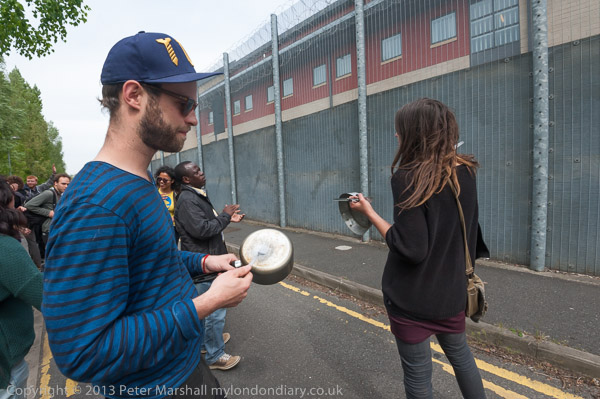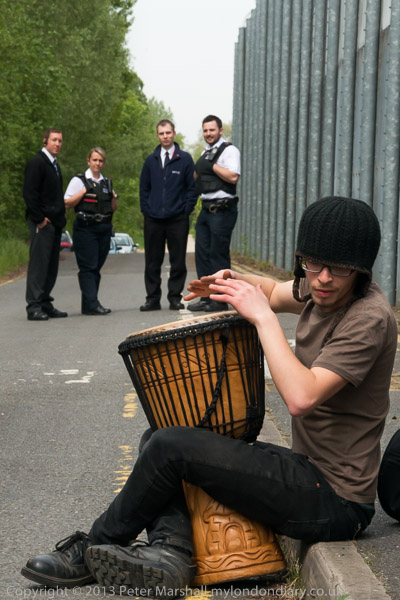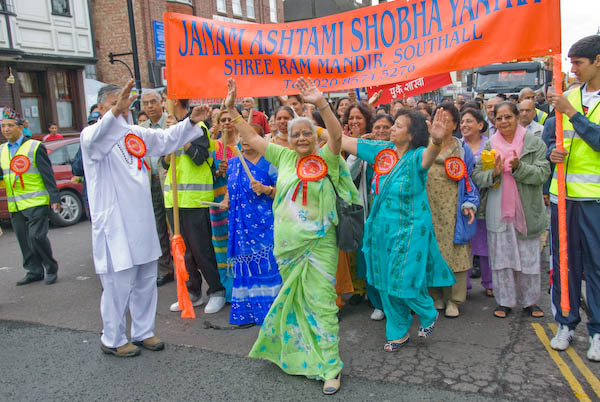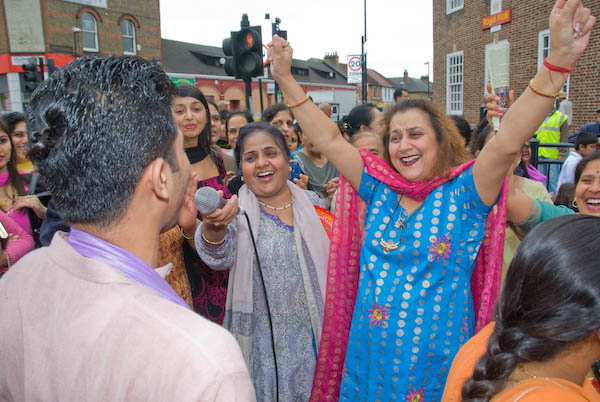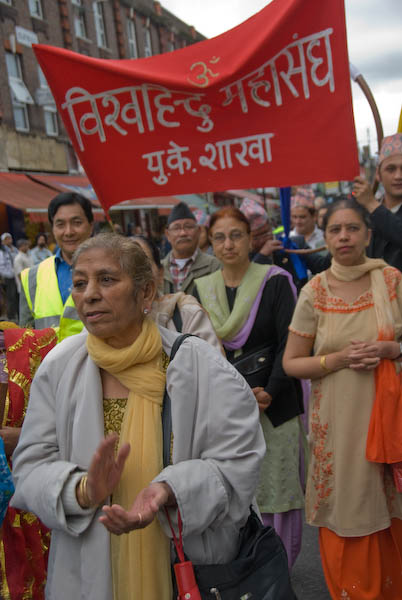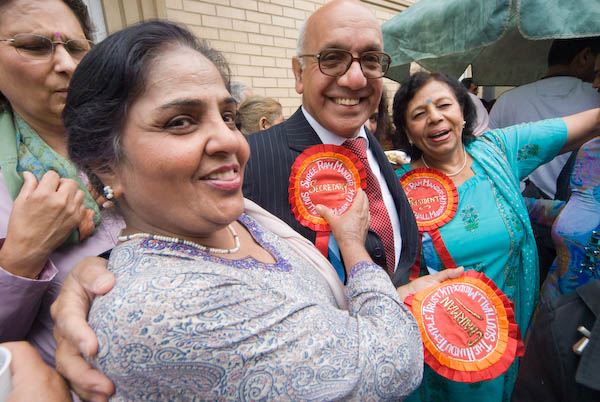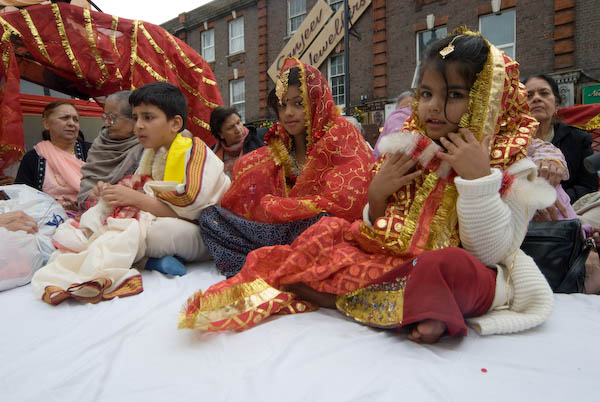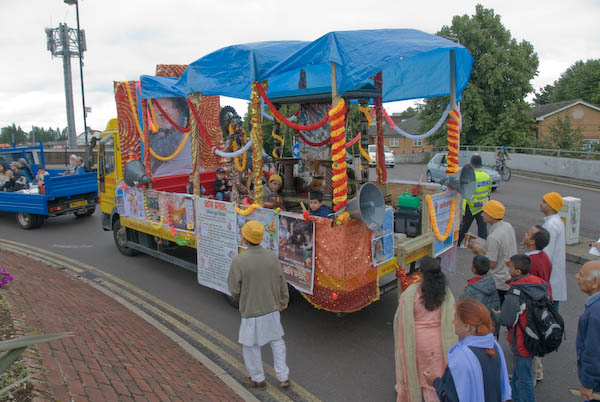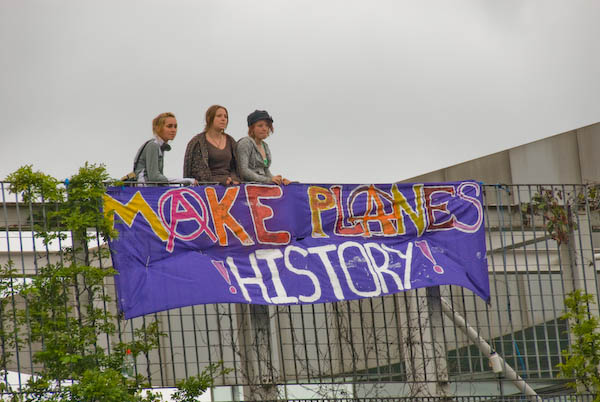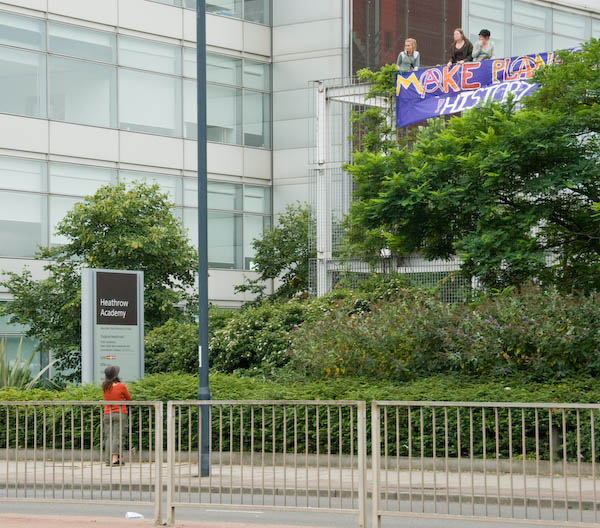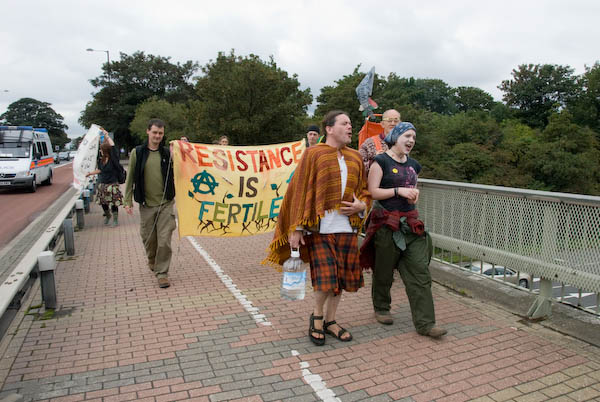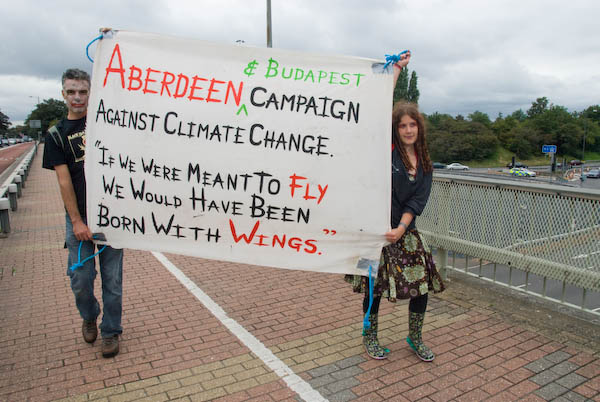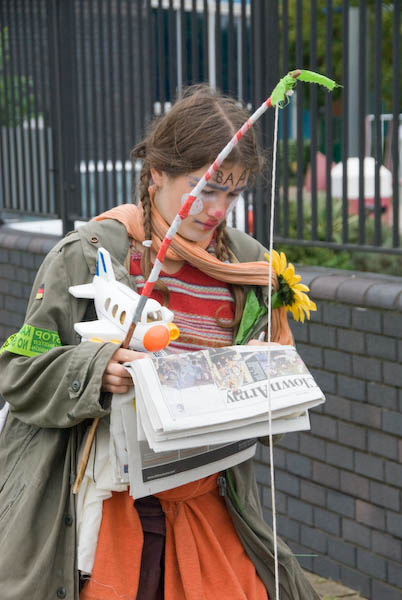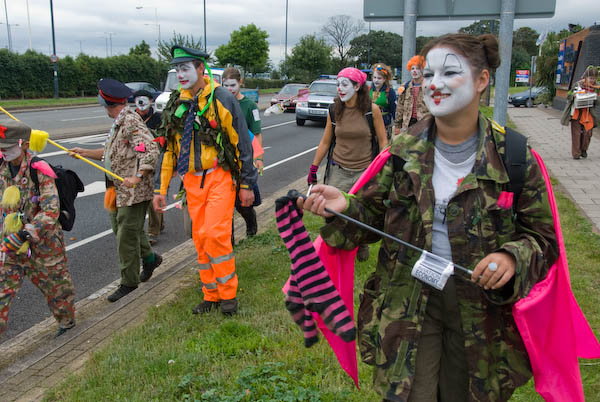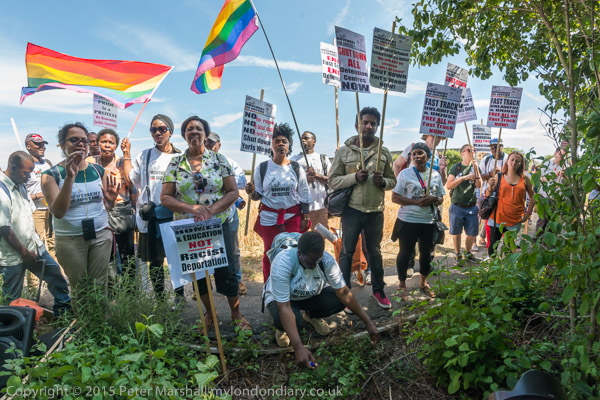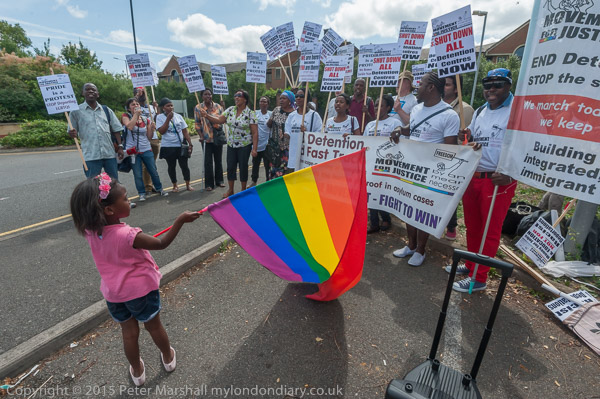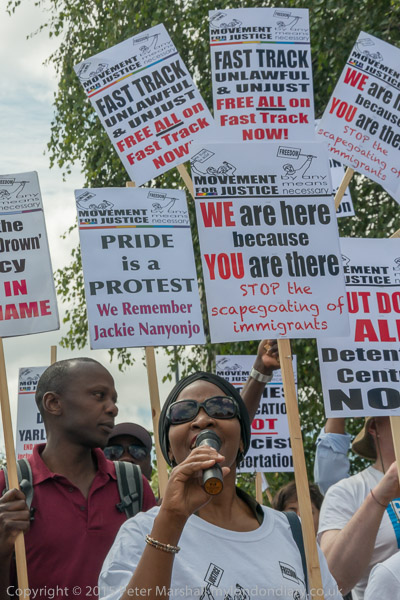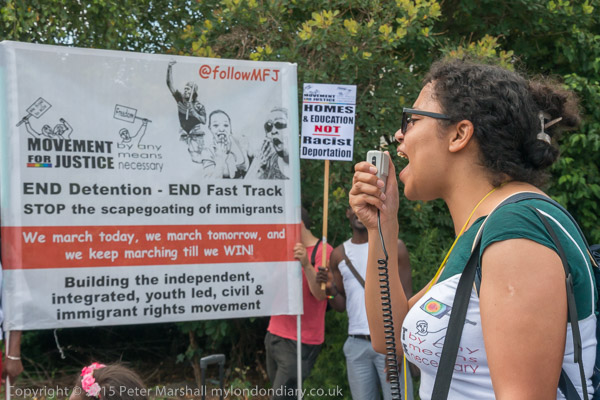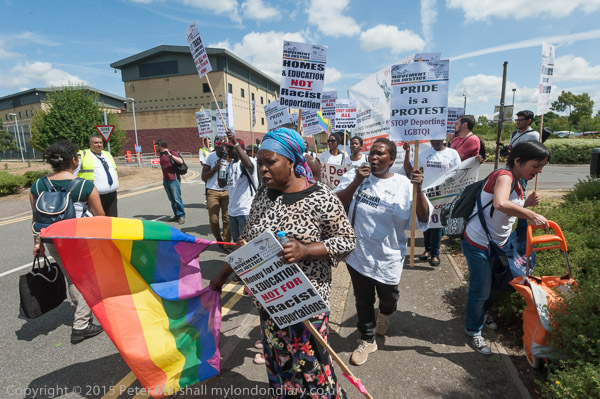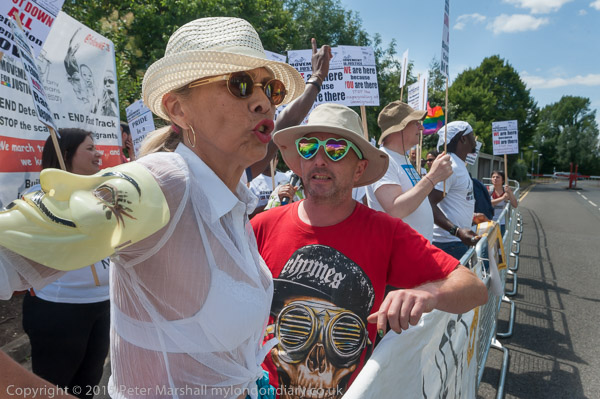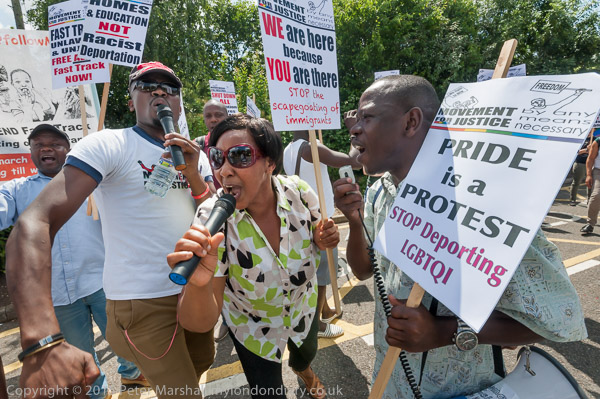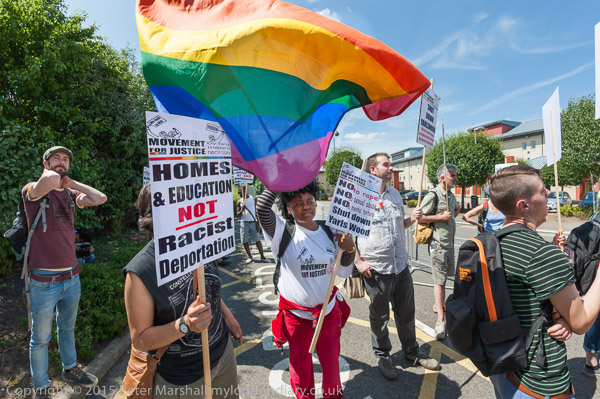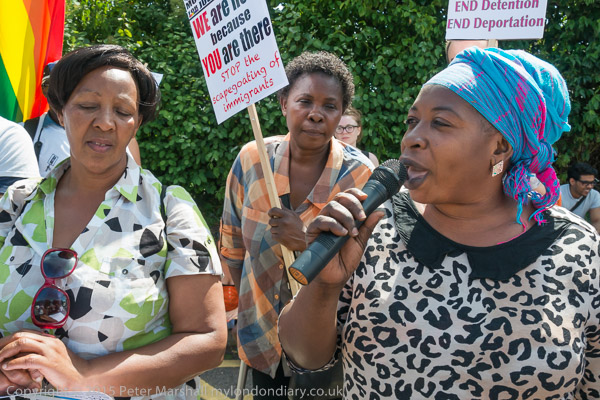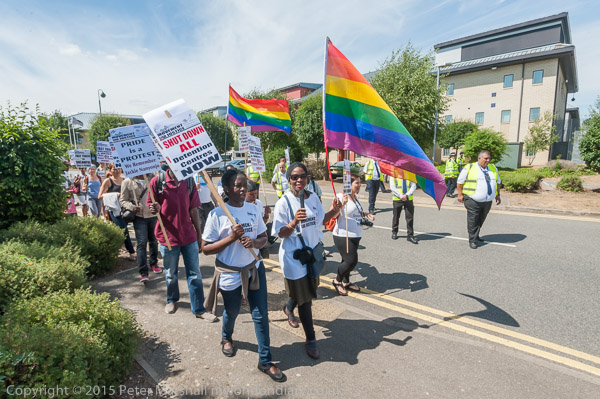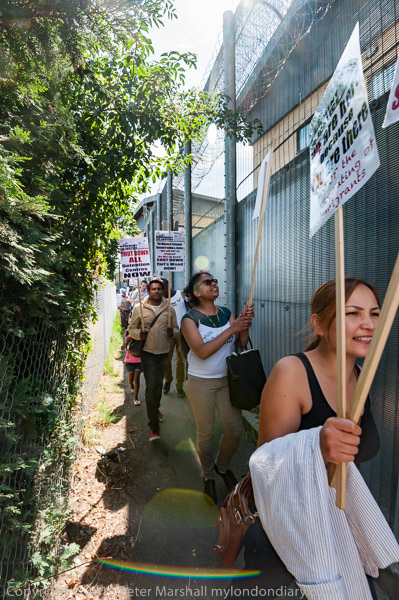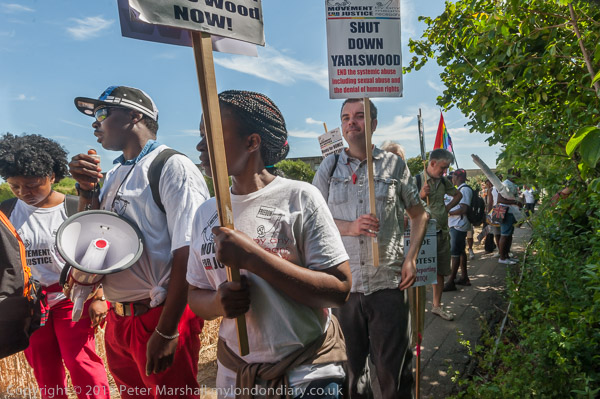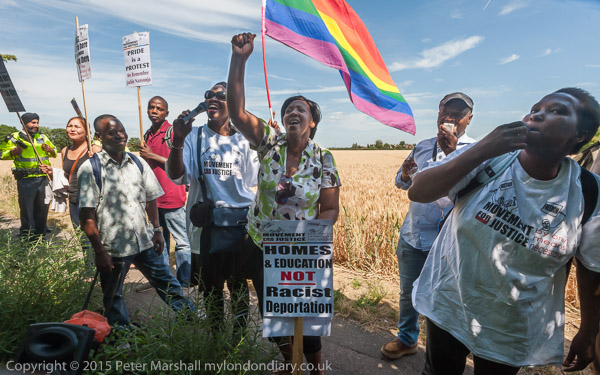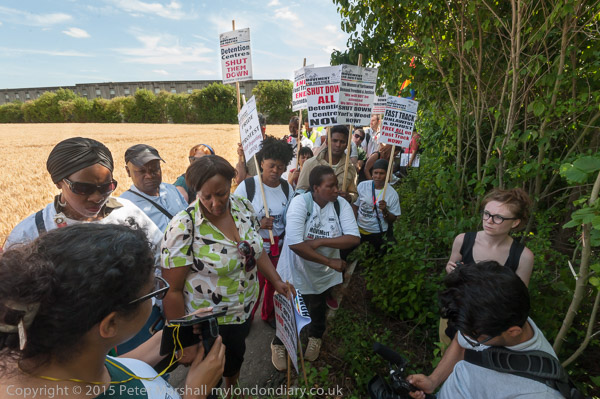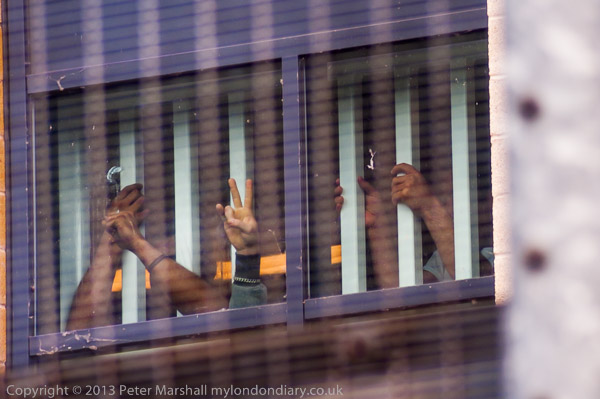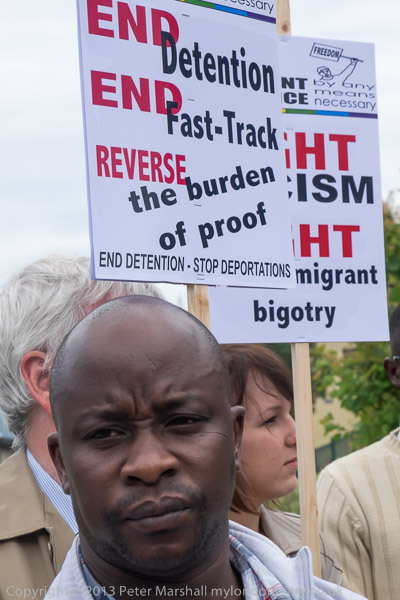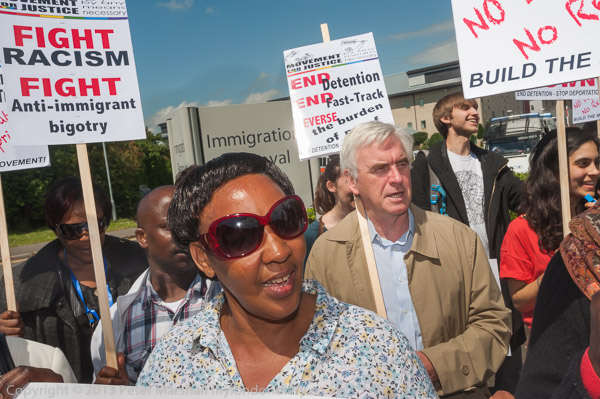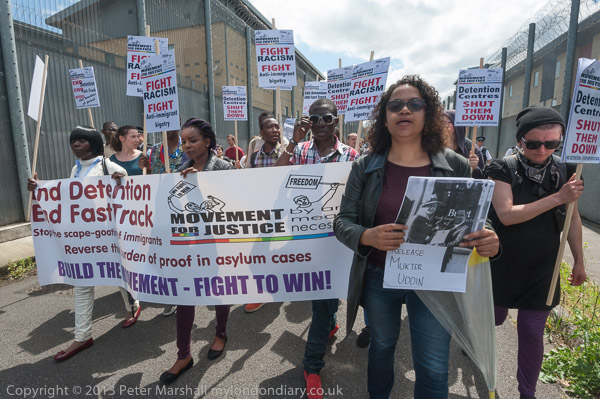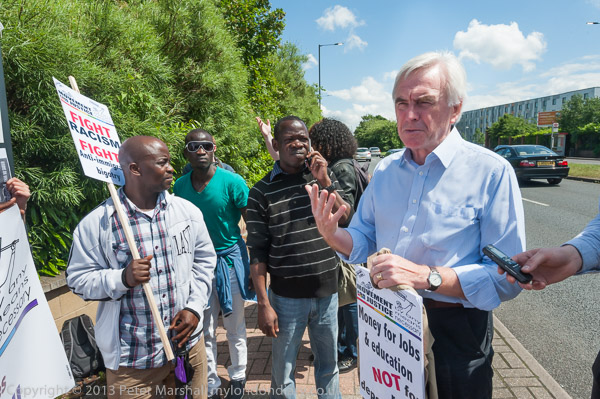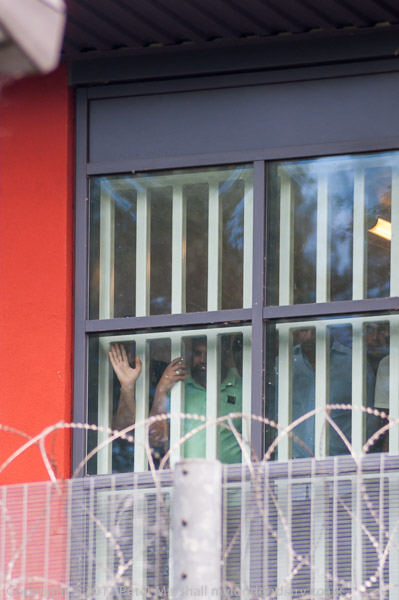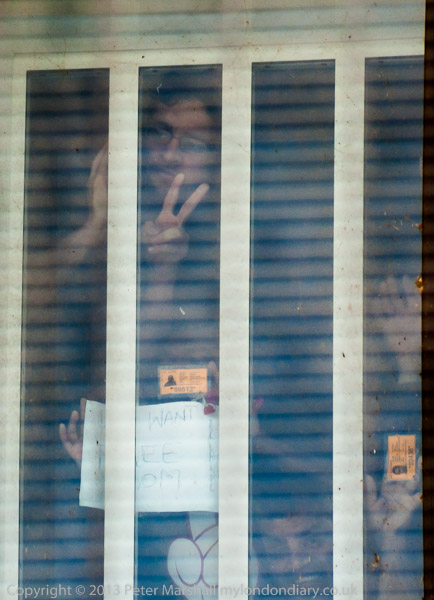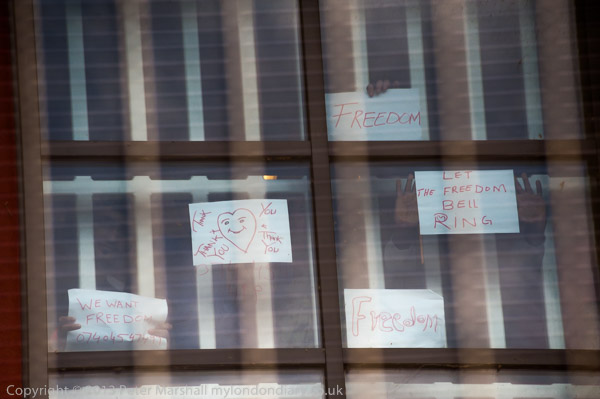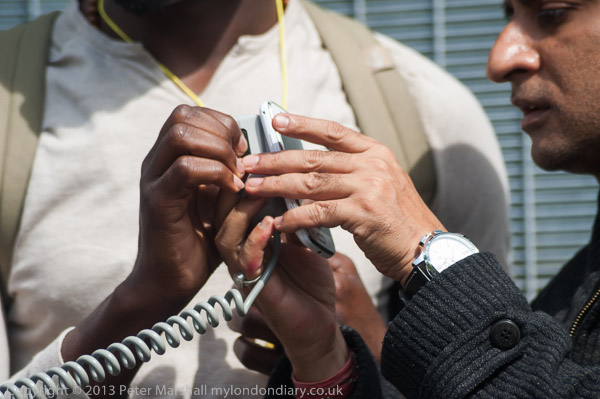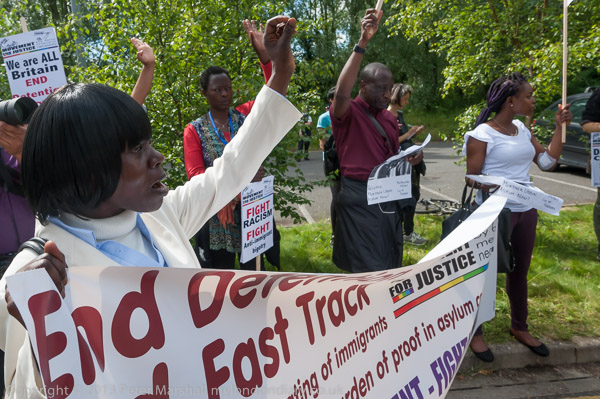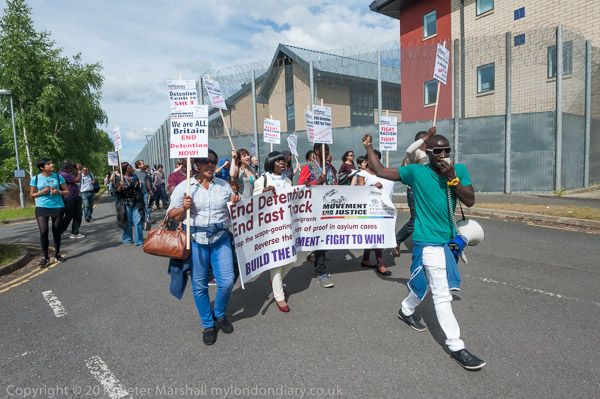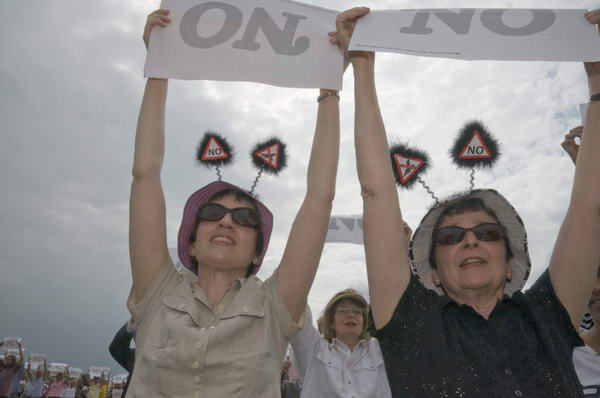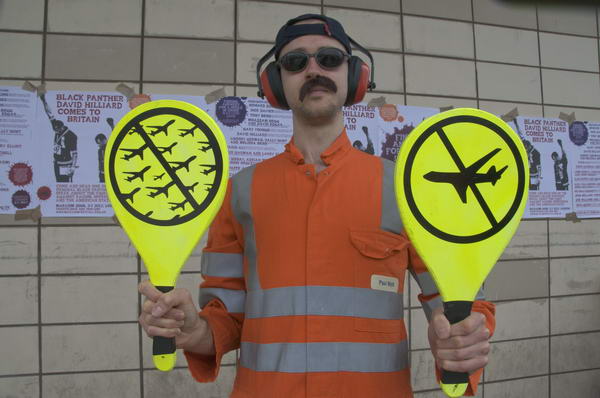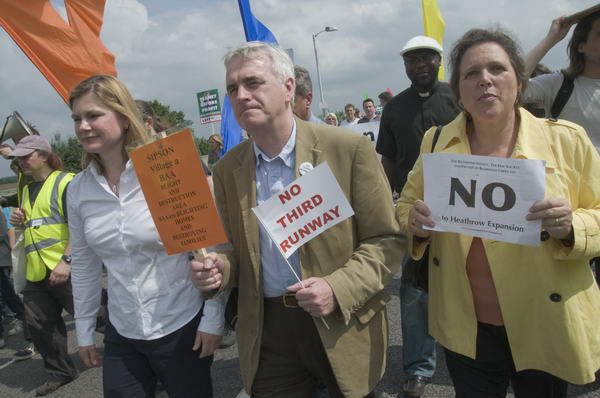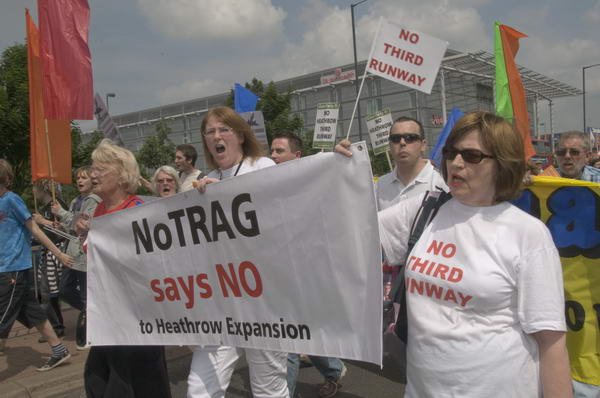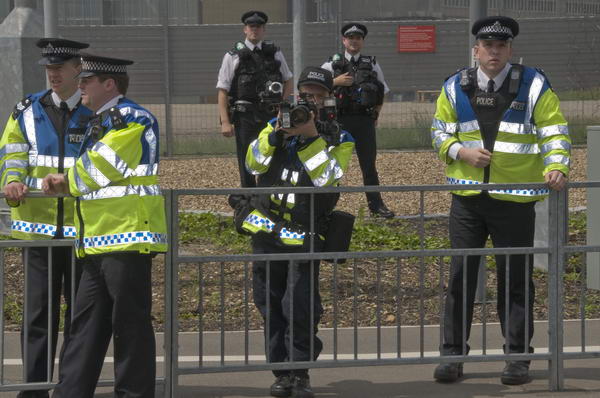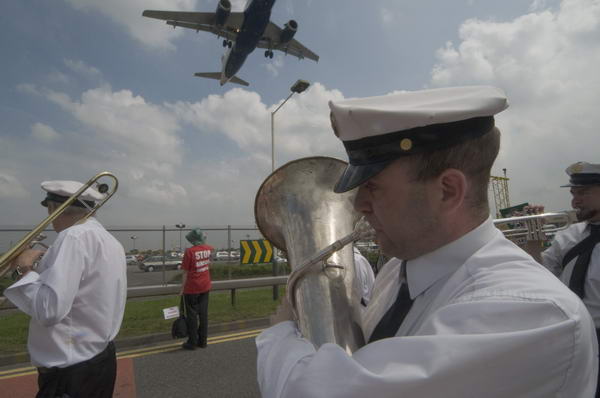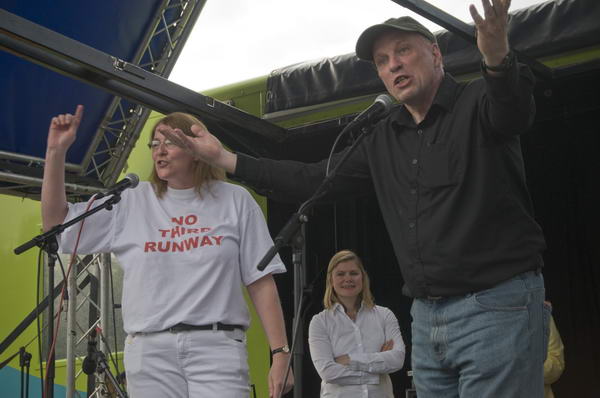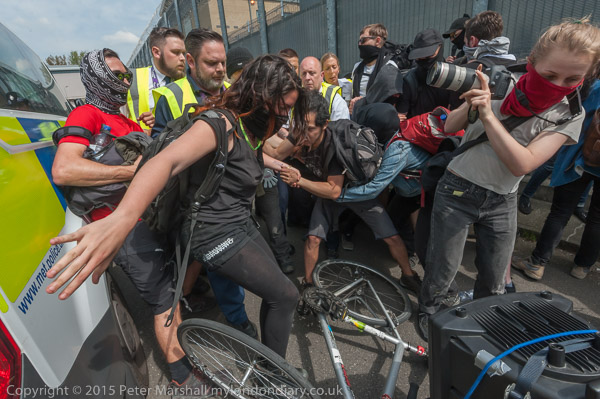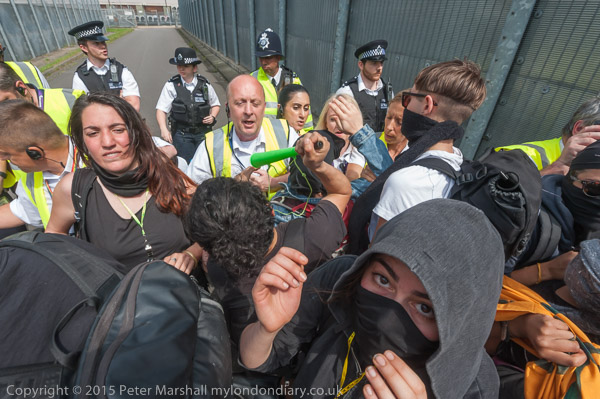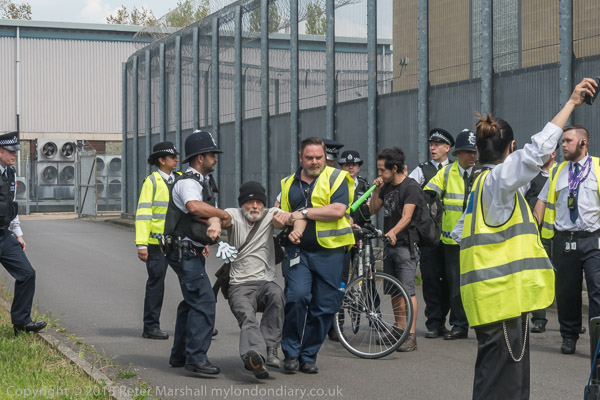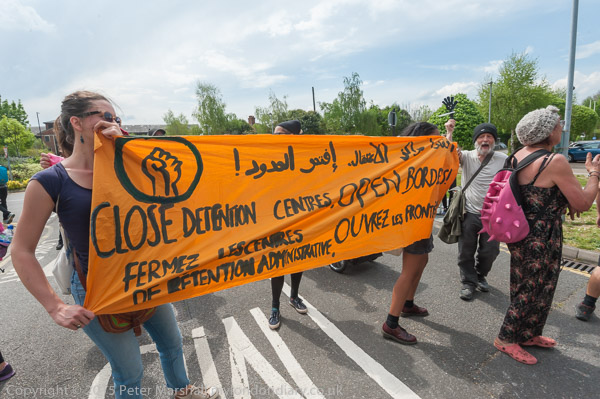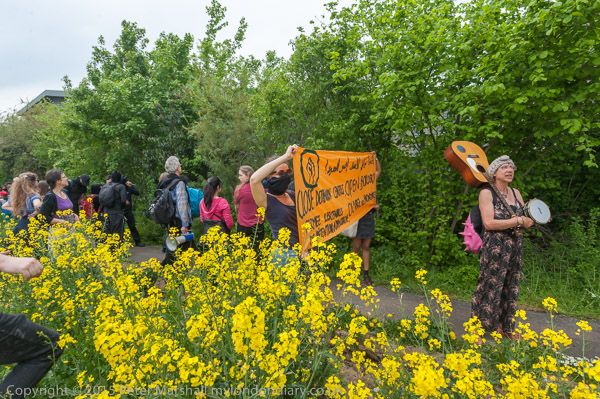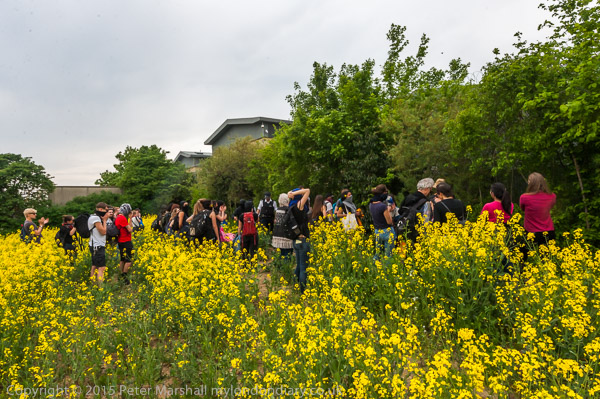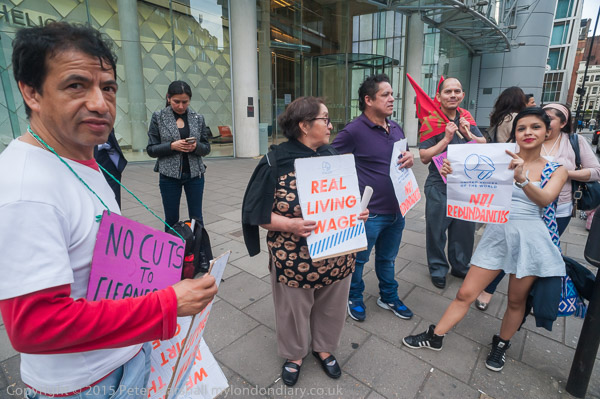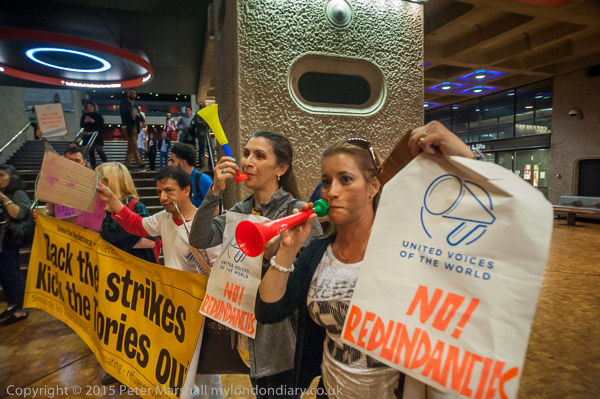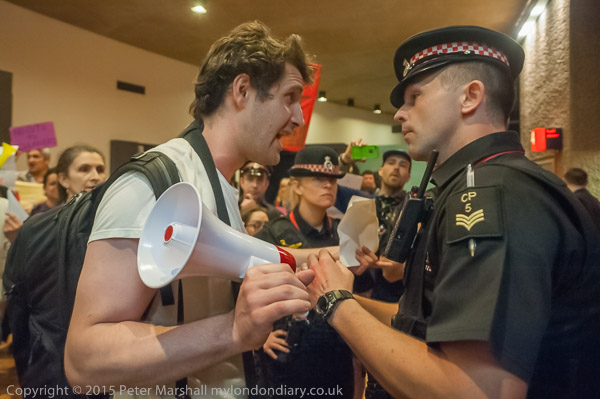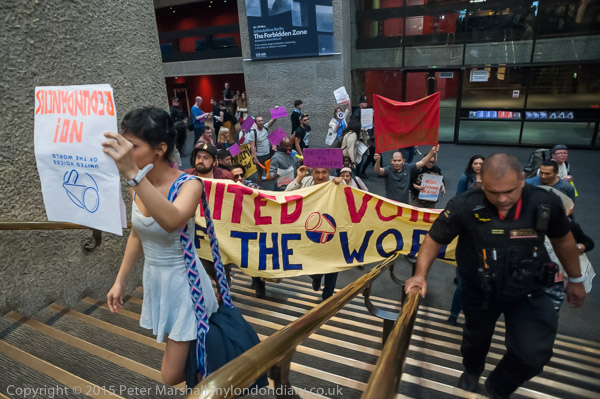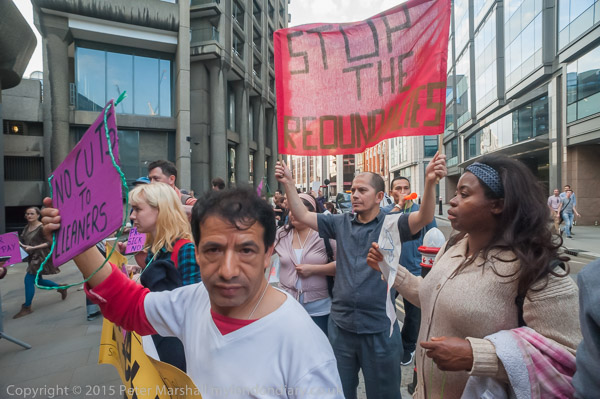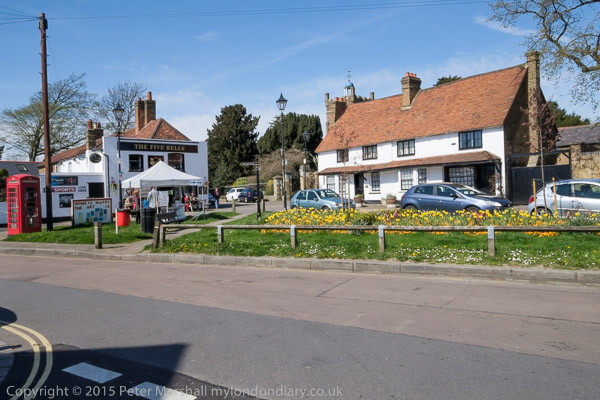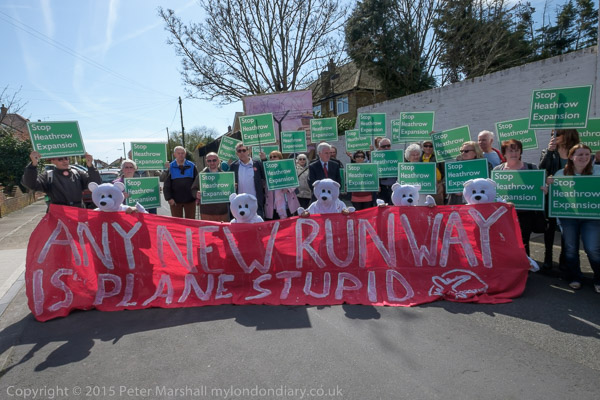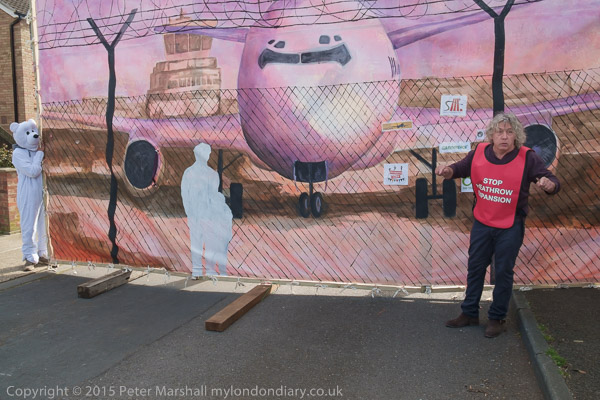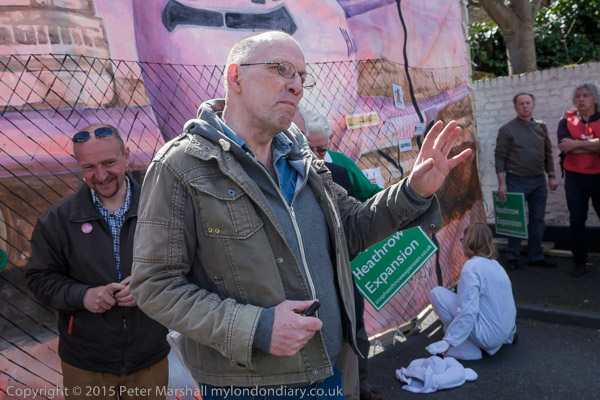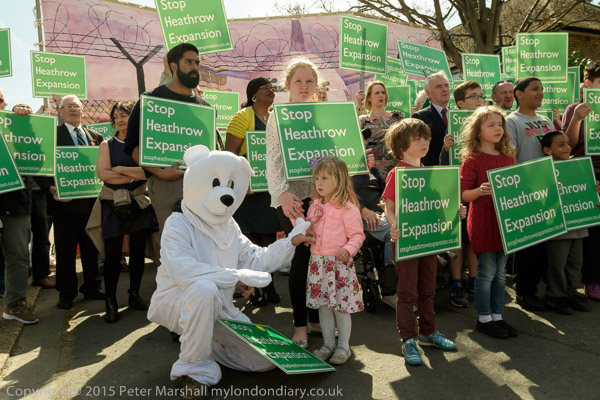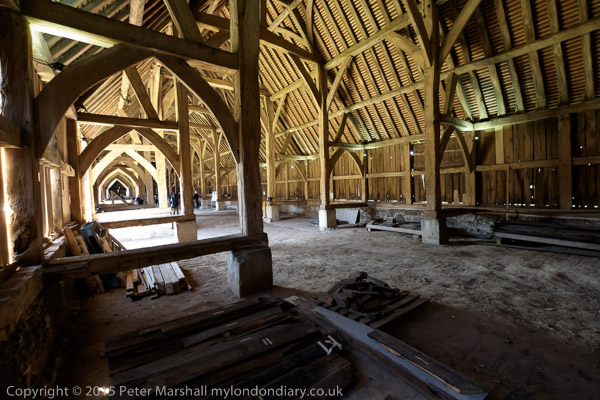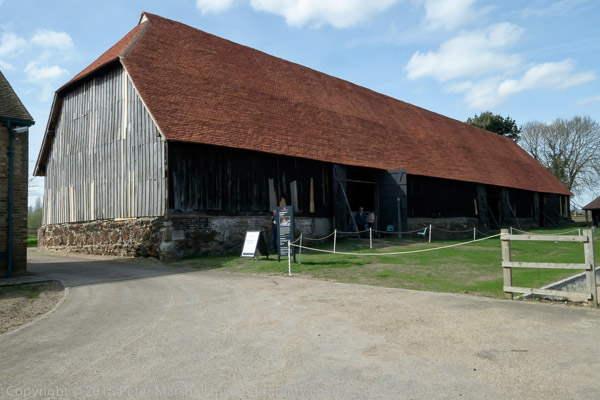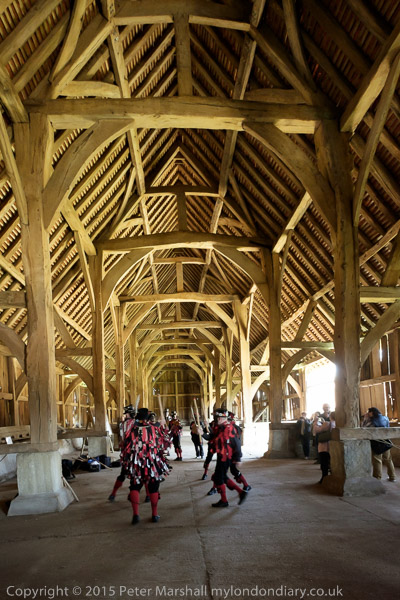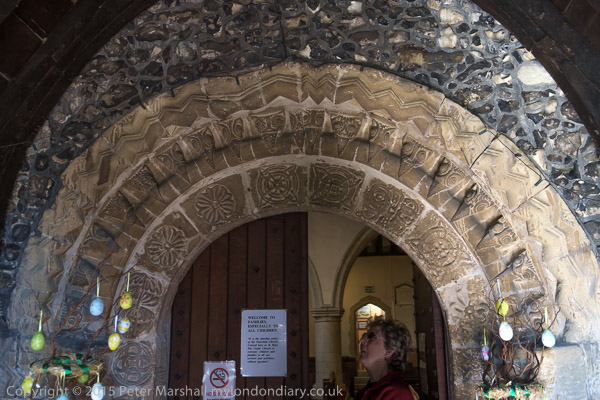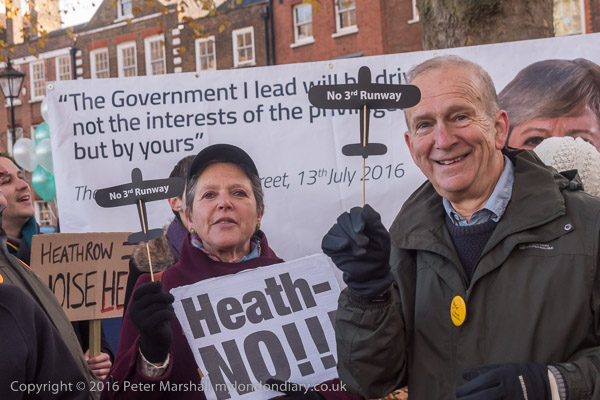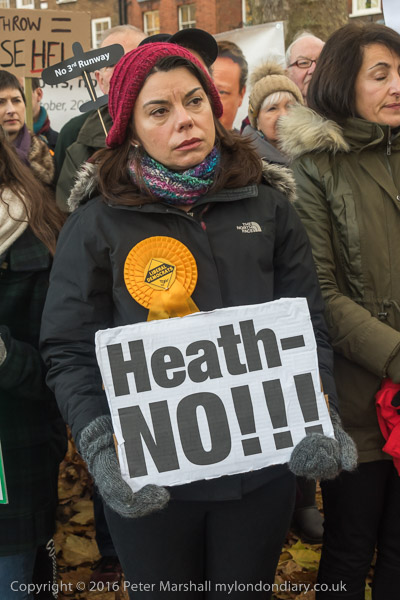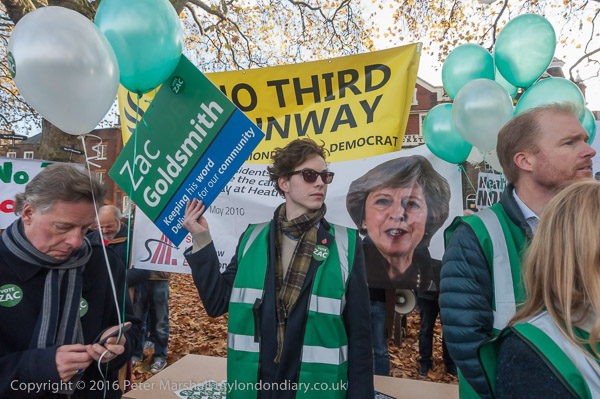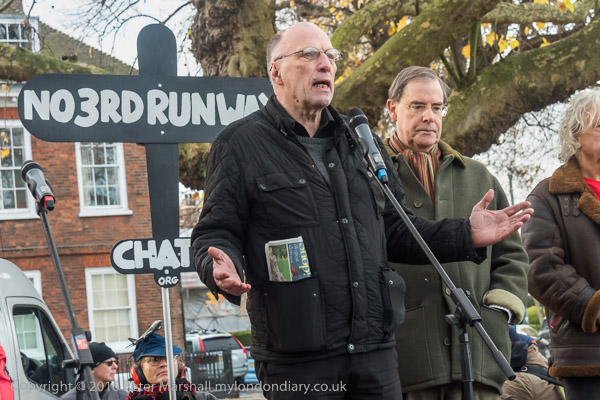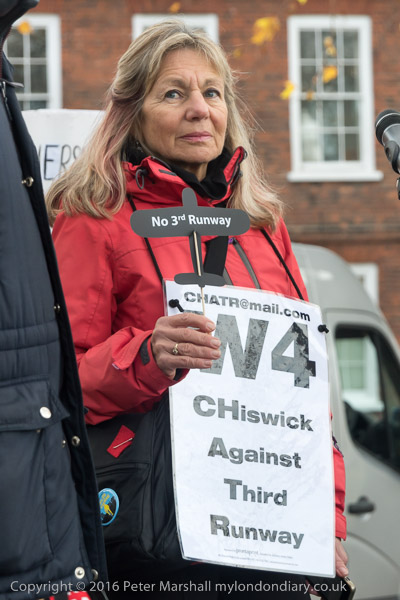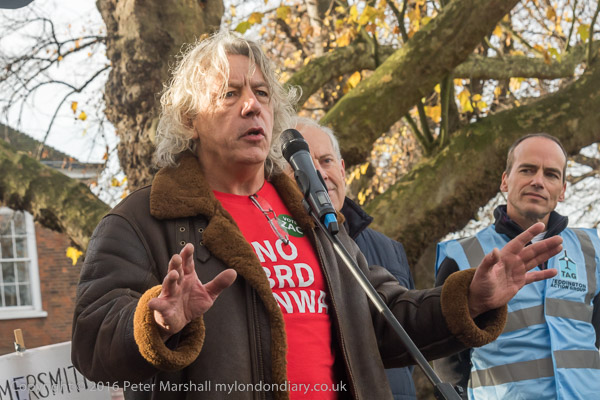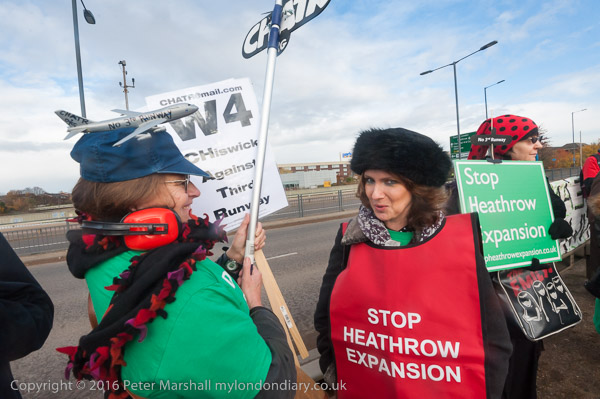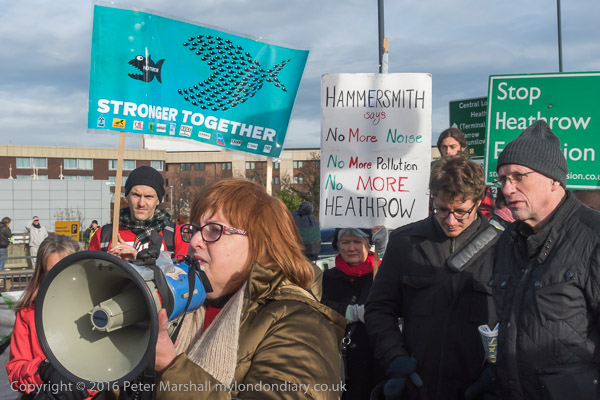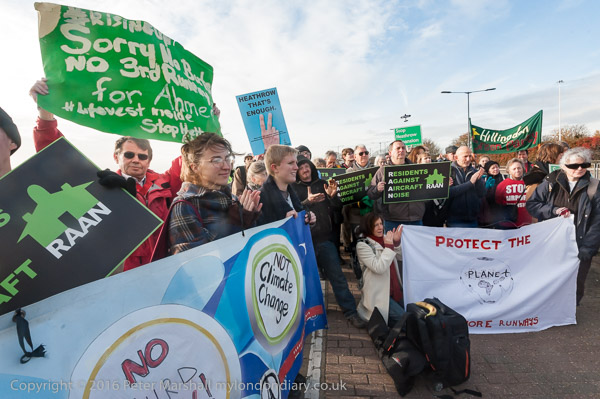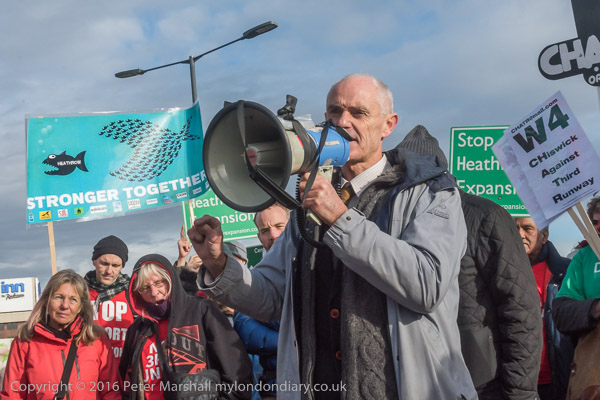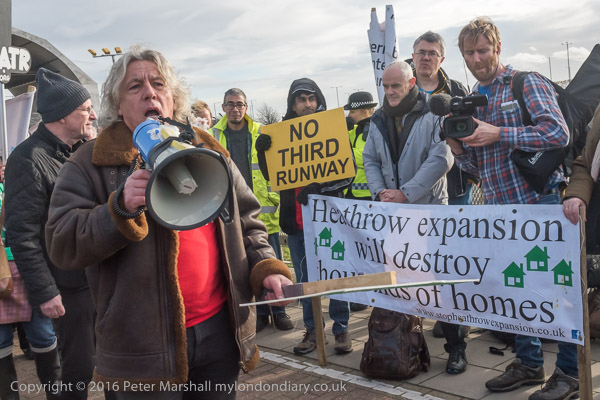Harmondsworth, Colnbrook & Heathrow: Back in 2014 I could take a bus a short walk from my home which took me to within a few yards of what had recently been renamed the Heathrow Immigration Removal Centre on Bath Road to the north of Heathrow Airport. And since the bus only ran every half hour I arrived a while before the protest there began and had time for a short walk – and almost half an hour to wait on my way home.
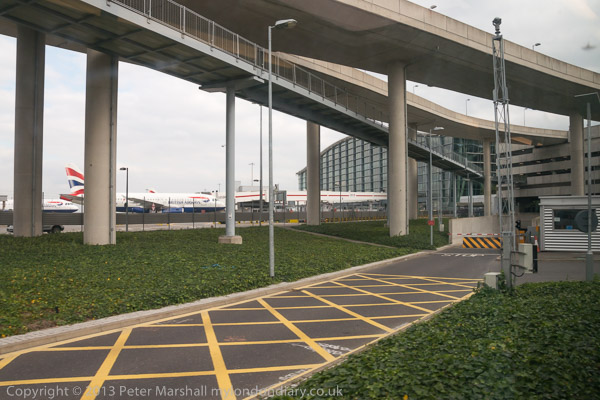
Surprising both buses had fairly clean windows and I also took a few pictures through them on my journey, and you can see a few more at Colnbrook and Heathrow. Before the protest I’d walked beside the Duke of Northumberland’s River which runs through the extensive grounds of the British Airways offices, and on the other bank is a tall fence for the Immigration Centre and BT premises.
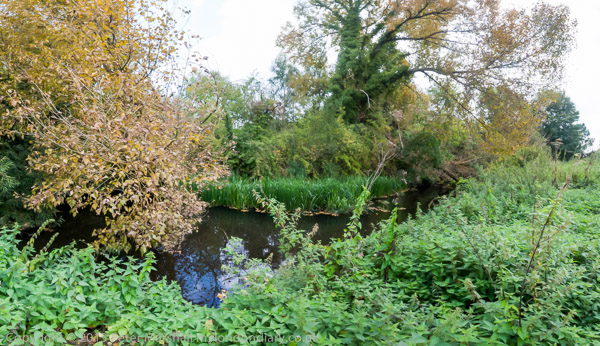
The river is a man-made distributary of the River Colne, dug to take water to the Isleworth flour mill and Syon House. Along with another channel, the Longford River, built to take water to Bushy Park and Hampton Court, it has been rerouted around Heathrow airport and some of the pictures from the bus show the two in their new largely concrete channels beside the perimeter road.
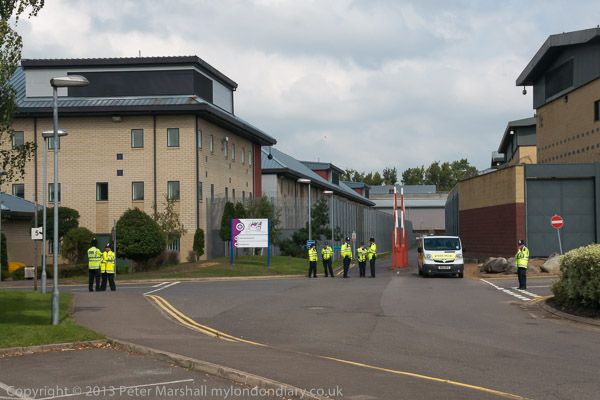
There are two immigration prisons on each side of a private road leading to the BT site behind. On the left of the picture is the Harmondsworth prison block, and on its right the high-security Colnbrook centre. At the start of the month both had been taken over by Mitie, as ‘Heathrow Immigration Removal Centre’, making ‘Care and Custody’, the Mitie subsidiary running the centre the “largest single private sector provider of immigration detention services to the Home Office.”
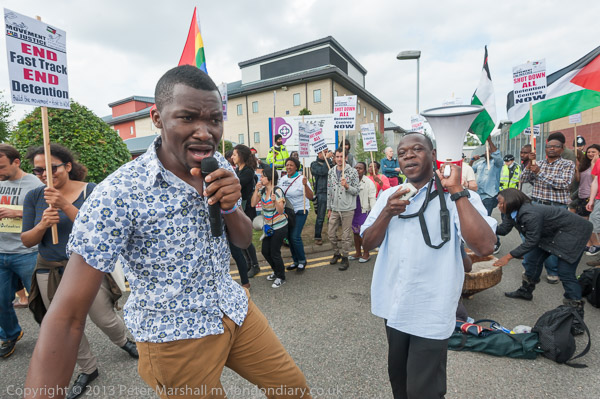
Mitie’s track record in running such centres should have disqualified them from running and government services. At Campsfield there had been three mass hunger strikes, a suicide and a disastrous major fire – perhaps why they had become one of the government’s favourite contractors.
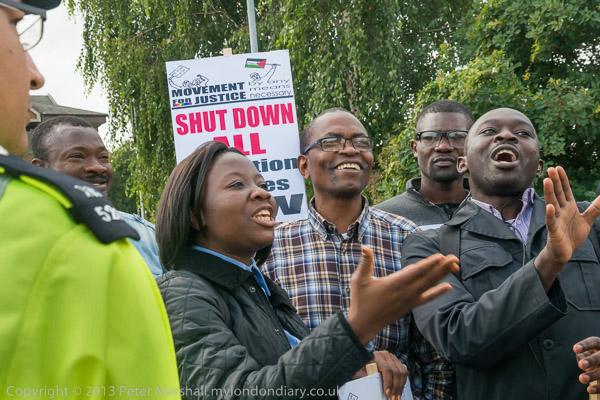
The name ‘Immigration Removal Centre’ reflects the government’s racist policies towards asylum centres. It wants to remove immigrants, whether or not they have a sound case for asylum. Such centres lock up people making it harder for them to pursue their case to remain in the UK and easier for them to be deported. The great majority of those imprisoned will eventually be given the right to remain in the UK, but may be held in centres like this for many months or even more than two years before being released so they can continue their lives – and make the positive contribution they will to UK society and our economy.
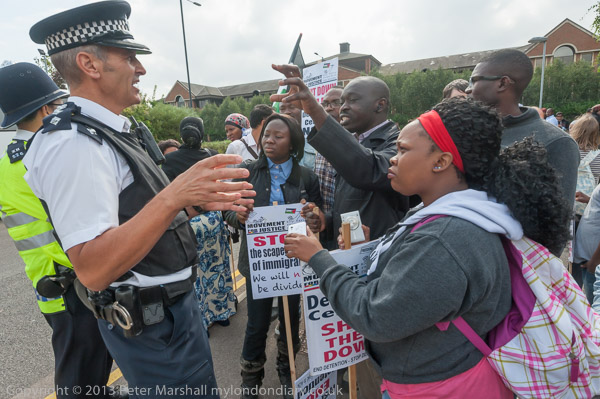
At previous protests here the protesters had been allowed to march down the private road between the two prisons and continue alongside the 20 foot fence around the Harmondsworth site back to the front. But now – perhaps due to the new management – police refused to allow them access, restricting the protest to a pen in front of the centre’s administrative block.
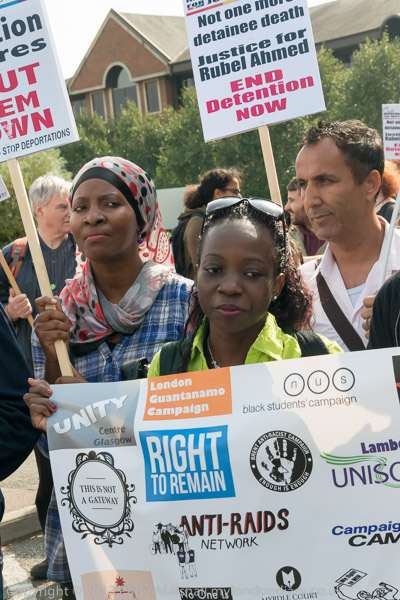
The protest was one of a number here organised by the Movement for Justice, and supported by many other organisation and the protesters argued for some time to be allowed to march down the roadway and around the Harmondsworth centre as usual but without success. Eventually the around a hundred protesters who had travelled out to the western edge of London moved into the pen provided.
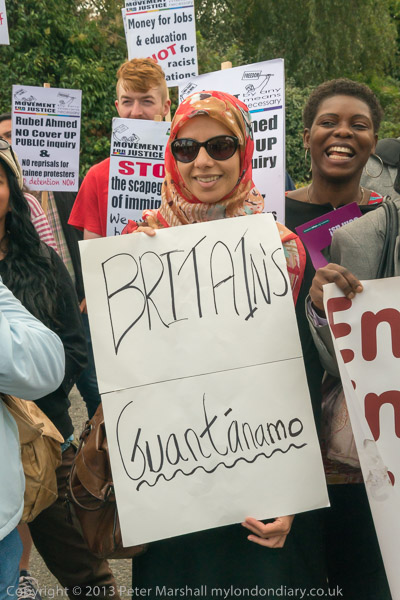
The majority of those attending the protest were immigrants, many of whom had been held in this centre or others around the country. Harmondsworth imprisons male detainees, and many of the women at the protest had spent time in Yarl’s Wood near Bedford. Later MfJ would concentrate their protests at that centre.
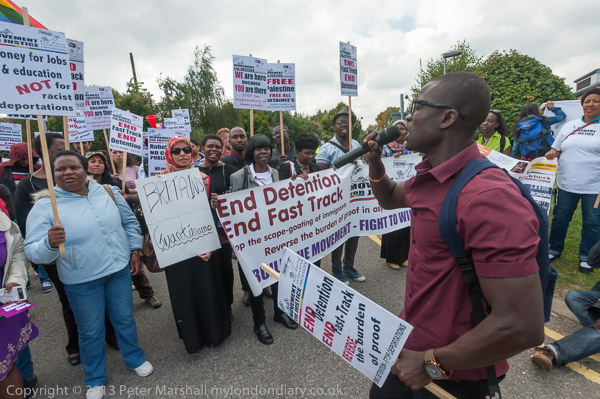
The protest was a very noisy one, with loud shouting and drumming and a great deal of dancing between the speeches. Phone calls from inside told the protesters that they could be heard inside the cell blocks.
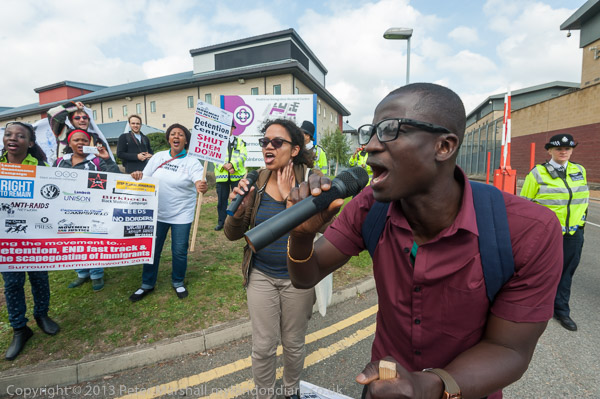
Most of those who spoke were former asylum speakers and told of the suffering they had endured in our immigration detention. As some said, it was worse than prison, as the detention was indefinite. They had no release date to look forward too, and could have been deported at any time back to the countries which they had fled in fear of their lives.

Speakers also called for an end to the ‘Detained Fast Track’ system, deliberately set up when Labour where in power to make it impossible for many asylum claimants to defend themselves against deportation and remove them from the country before they are able to do so. It’s a shameful system that no country that believes in the proper rule of law, fair play and human decency could support.
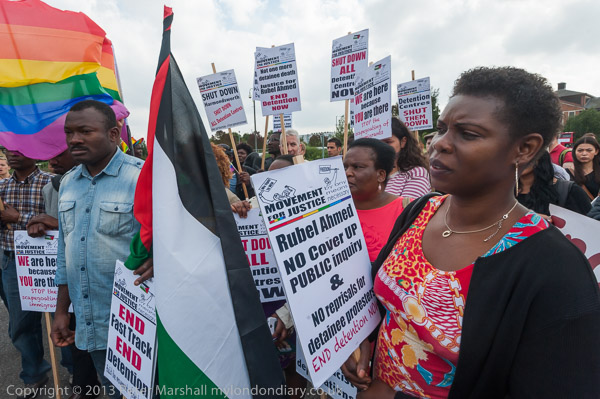
Various legal challenges to ‘Detained Fast Track’ led to the High Court declaring in January 2017 that DFT had denied justice to asylum seekers for the previous ten years, with thousands being deported without a lawful hearing of their cases.
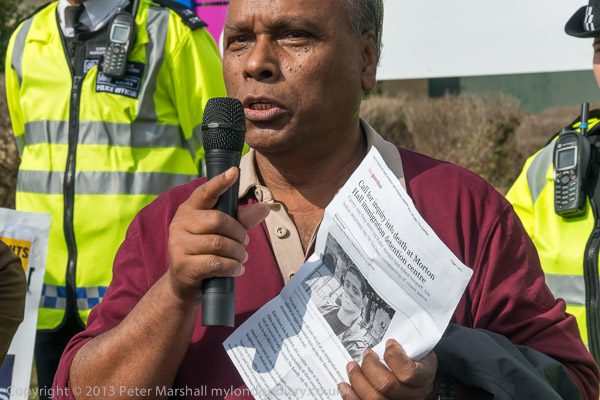
A friend of the family of Rubel Ahmed who described how he died in Morton Hall immigration detention centre in Lincolnshire on September 5th 2014 after having been refused refused medical treatment for his chest pains. Fellow prisoners heard him screaming for help, and had rioted after his death, taking control of the detention centre until brutally suppressed. One who contacted the press was brutally beaten by prison guards.
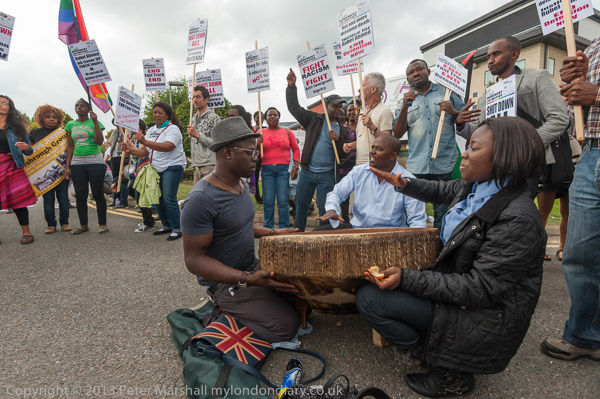
Many more pictures from the protest on My London Diary at Close UK Immigration Prisons.
